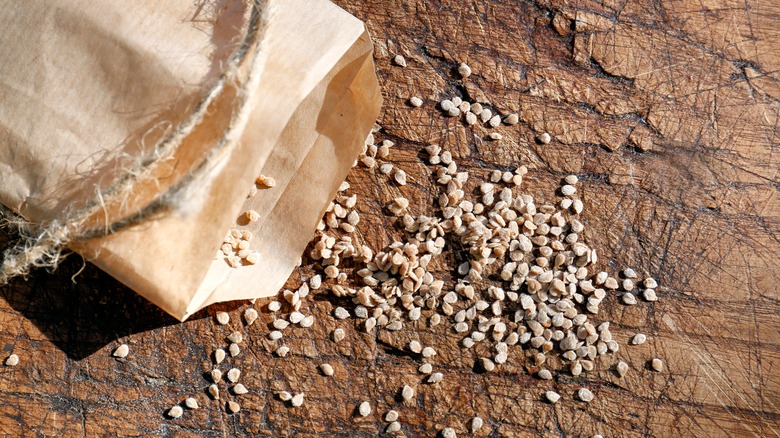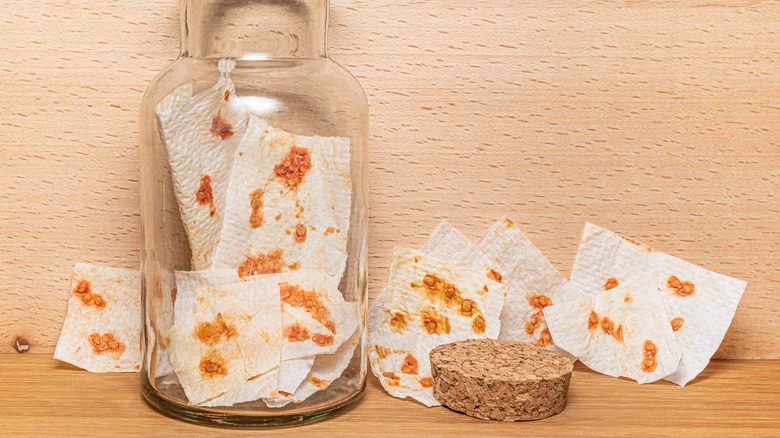Starting Your Seed-Saving Journey? Here Are Beginner-Friendly Options To Try First
Are you thinking about saving seeds to use in your garden? It's a fun activity that gives you a sense of pride, knowing you've been there for your plants from seed to harvest. But equally, saving seeds and trying to germinate them later can be a frustrating task if you target the wrong crops for saving.
Some of the best, beginner-friendly seeds to try saving first are from lettuce, tomatoes, beans, peas, and peppers. That's because these are annual plants, meaning that they germinate, mature, bear fruit, and die in a single year. Unlike biennials, these annual plants do not make you wait two seasons to get the seeds. Also, the plants we've listed are capable of self-pollination. This means that the pollination process happens within the flowers without outside influence. On the other hand, cross-pollinating plants (which can also include tomatoes and peppers) need insects or hand-pollination to become fertile and bear fruit. What's more, if you grow cross-pollinating plants from seed, you'll need to isolate them to ensure that the crops are true to the parent; this is unnecessary with self-pollinating varieties like tomatoes, lettuce, peppers, peas, or beans. Another advantage of targeting these species seeds for saving is that they don't require any special storage conditions that a homeowner can't create at home.
A key factor to consider when choosing seeds is whether they come from an open-pollinated or hybrid variety. Hybrid plants — which are typically used in commercial agriculture — are a bit unpredictable. You never know what the crops will turn out like, and there's no guarantee that they will resemble their parents. On the other hand, open-pollinated varieties (such as heirlooms) generally come true from seed and have very similar characteristics to parent plants.
Tips for harvesting seeds successfully
The seed harvesting procedures vary somewhat depending on the plants you target. Lettuce is perhaps the simplest of all the plants we listed above. All you need to do is wait until the seed heads emerge after flowering, then shake the plant over a container to harvest the seeds. Now, to save your own tomato seeds, wait until the fruits are completely ripe. Then take the seed-containing gel out of the fruit and soak it in water. In a few days, the gel membrane will dissolve and foam will appear on the surface. Discard the foam and the water, and dry the tomato seeds on a paper towel for about a day.
With peppers, you have two ways to tackle seed harvesting. One way is to wait until the fruit is ripe, then take the seeds out and rinse them with water. Then dry the seeds in a sunny location on a paper towel. Alternatively, let the fruits dry on the plant after ripening first; just make sure that the peppers stay completely moisture-free to prevent mold from attacking the drying fruits. Once the peppers have dehydrated, remove the seeds and let them dry a bit more before placing them into the storage container.
When you harvest green bean seeds, wait until the pods have turned brown and papery; the seeds should make an audible clatter inside the pods. At this point, take the seeds out of the pods and give them a bit more time to dry. Leaving the seeds inside the dehydrated pods until the following year is also an option. In this case, take the seeds out right before you plant them. Genius, right? Learn more clever ways to store the seeds you collect from your garden.

